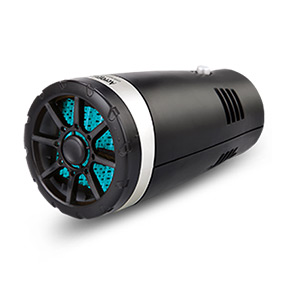Exploring Gear Cable Types and Their Benefits for Optimal Performance in Cycling
Understanding Gear Cables The Essential Component of Bicycle Performance
When it comes to cycling, performance is heavily influenced by the efficiency and reliability of various components of the bike. Among these components, gear cables play a crucial role in the shifting mechanism that enables cyclists to change gears smoothly and effectively. This article delves into the importance of gear cables, their construction, maintenance, and how they can affect your overall riding experience.
What are Gear Cables?
Gear cables, or shifter cables, are a vital part of the bicycle's transmission system. They connect the gear shifters on the handlebars to the derailleur, which is responsible for moving the chain between gears on the cassette or chainrings. The interaction between the shifters and the derailleur is what allows cyclists to adjust their bike’s gearing to adapt to different riding conditions, whether it’s climbing steep hills or speeding along flat roads.
Construction of Gear Cables
Gear cables are typically made from high-tensile steel, which provides strength and durability while being lightweight. The cable runs through a series of housings and pulley systems, designed to ensure smooth operation and minimize friction. The cable’s outer casing, often made from polymer or other protective materials, shields it from dirt and moisture, which can degrade its performance over time.
Modern gear cables come in various designs, including coated cables that reduce friction even further, allowing for quicker and smoother gear changes. When choosing gear cables, it's essential to consider the type of bike, the riding style, and the specific gear system being used, whether it’s a road bike, mountain bike, or hybrid bicycle.
The Importance of Proper Maintenance
gear cables

Just like any other bicycle component, gear cables require proper maintenance to function optimally. Over time, cables can stretch, fray, or become rusty, leading to poor shifting performance. Regular inspection and maintenance are critical to ensure that your gear cables remain in good condition.
One of the simplest maintenance tasks is to keep the cables clean and lubricated. Dirt and debris can accumulate in the cable housing, causing resistance that hinders shifting performance. Using a dedicated cable lubricant can help reduce friction and extend the lifespan of the cables. In addition, checking for signs of wear, such as frays or kinks, is essential. If a cable looks damaged, it should be replaced promptly to avoid the risk of sudden failure during a ride.
Signs of Trouble
How do you know when your gear cables are in need of attention? There are several indicators that can signal it's time for maintenance or replacement. If you notice that shifting between gears has become sluggish or difficult, or if you hear unusual clicking or grinding noises when attempting to shift, these are clear signs that your gear cables may be the culprit. Additionally, if gears are skipping or not engaging properly, it may indicate that the cables are stretched or misaligned.
Choosing the Right Gear Cables
When it comes time to replace your gear cables, it's essential to select the right ones for your bike. Cables come in different lengths, diameters, and styles, so it's crucial to consult your bike's specifications or seek advice from a knowledgeable bike shop professional. Investing in high-quality cables designed for your specific system (such as Shimano, SRAM, or Campagnolo) can improve your bike’s shifting performance significantly.
Conclusion
In the world of cycling, every component plays a role in enhancing performance, and gear cables are no exception. By understanding their function, maintaining them properly, and choosing the right cables for your bike, you can ensure that your bicycle delivers the best possible shifting experience. Whether you're a casual rider or a competitive cyclist, paying attention to your gear cables will contribute significantly to your enjoyment and efficiency on the road or trail. So, the next time you're gearing up for a ride, take a moment to check on your gear cables—your bike will thank you for it!
-
Workings of Clutch Pipe and Hose SystemsNewsJun.04,2025
-
The Inner Workings of Hand Brake Cable SystemsNewsJun.04,2025
-
The Secrets of Throttle and Accelerator CablesNewsJun.04,2025
-
The Hidden Lifeline of Your Transmission Gear Shift CablesNewsJun.04,2025
-
Demystifying Gear Cables and Shift LinkagesNewsJun.04,2025
-
Decoding Clutch Line Systems A Comprehensive GuideNewsJun.04,2025
